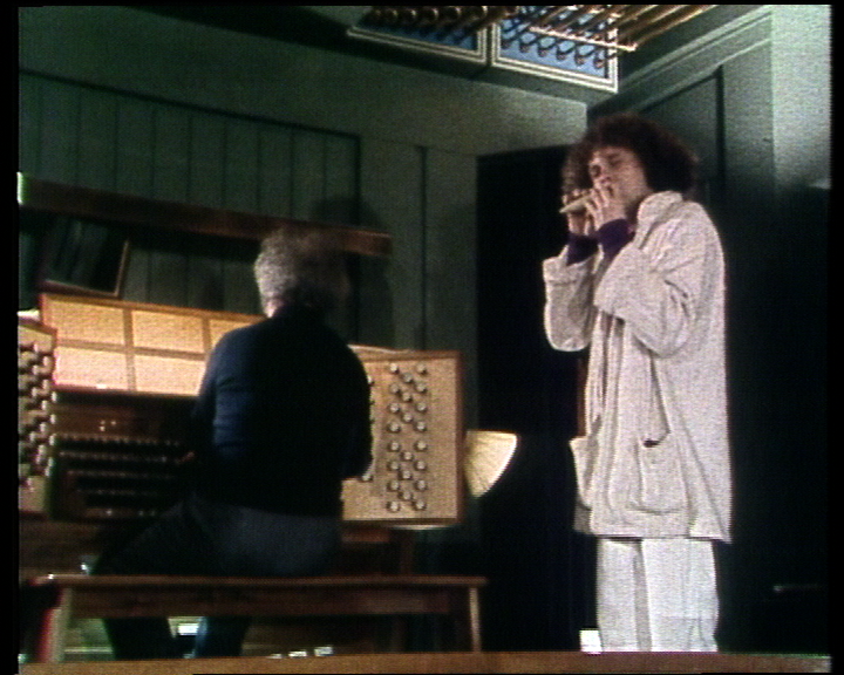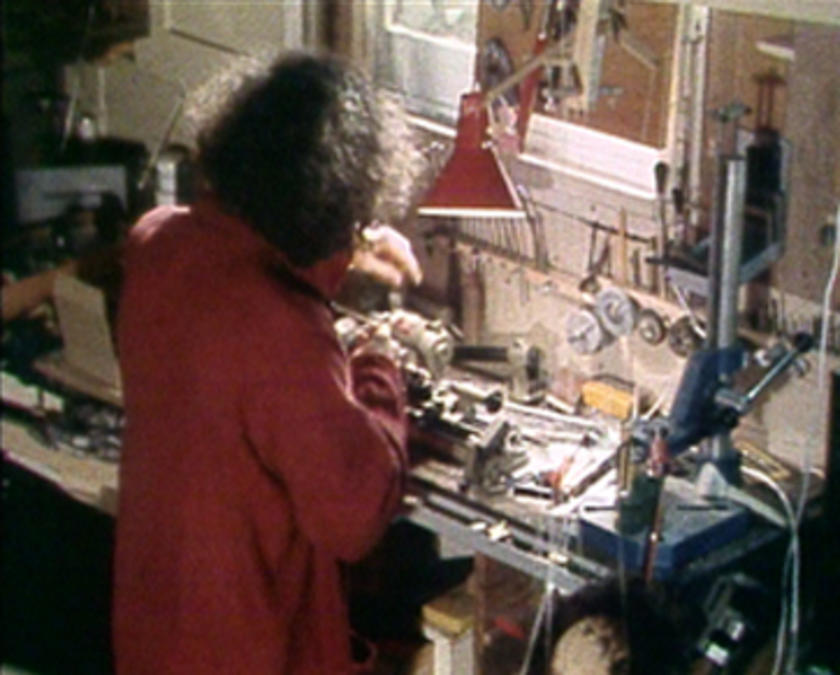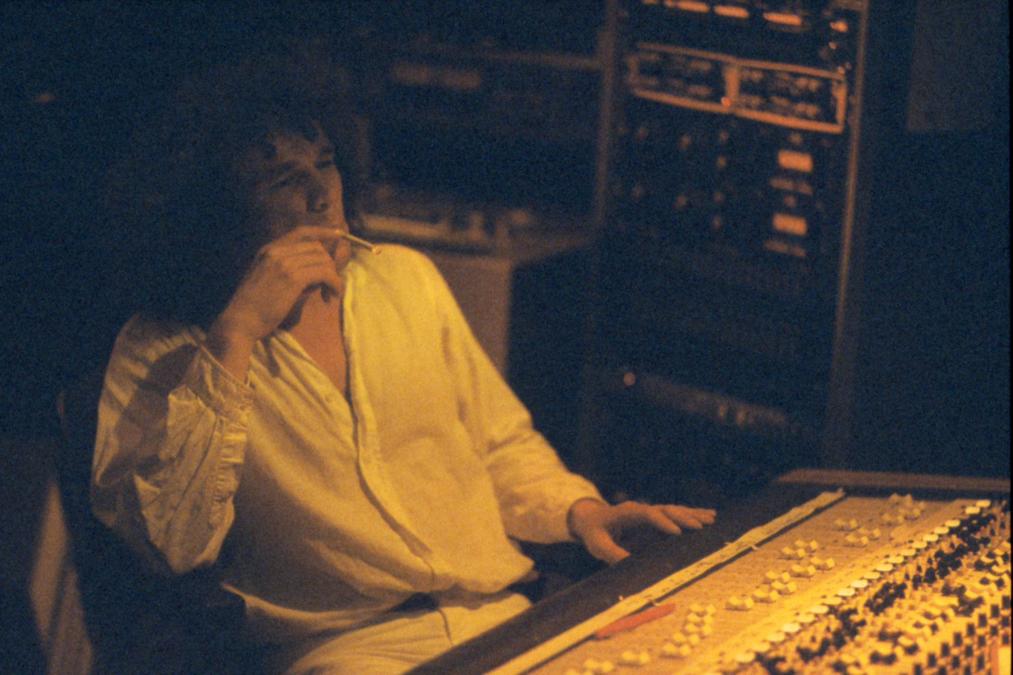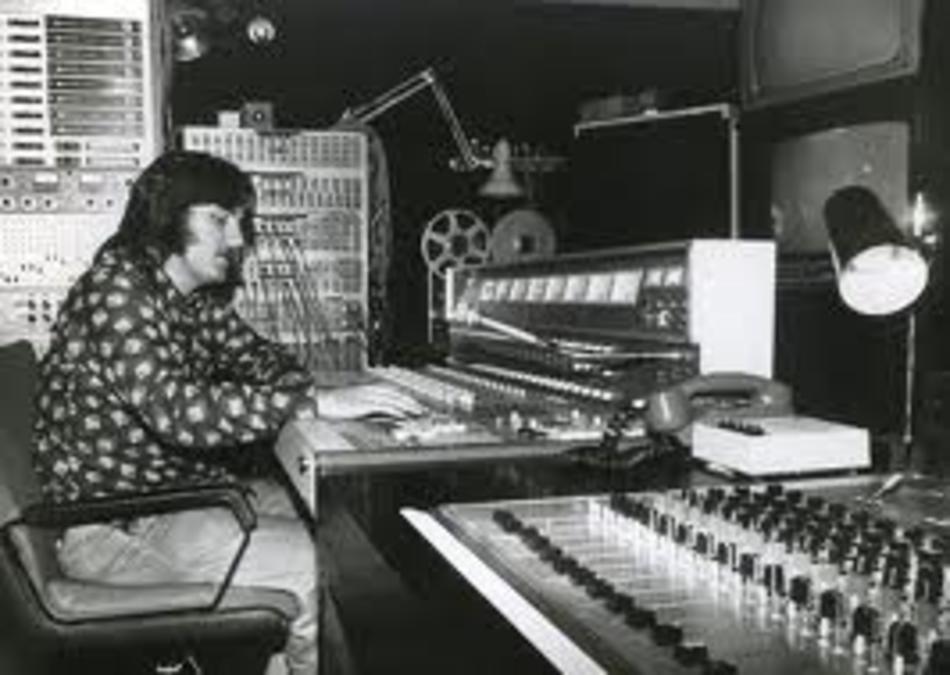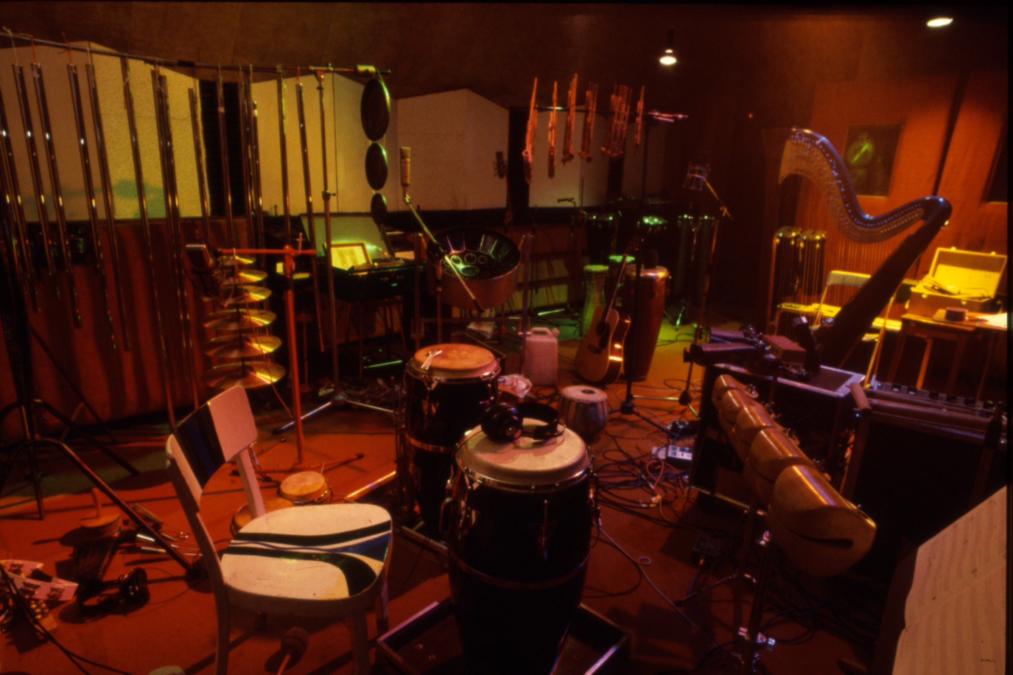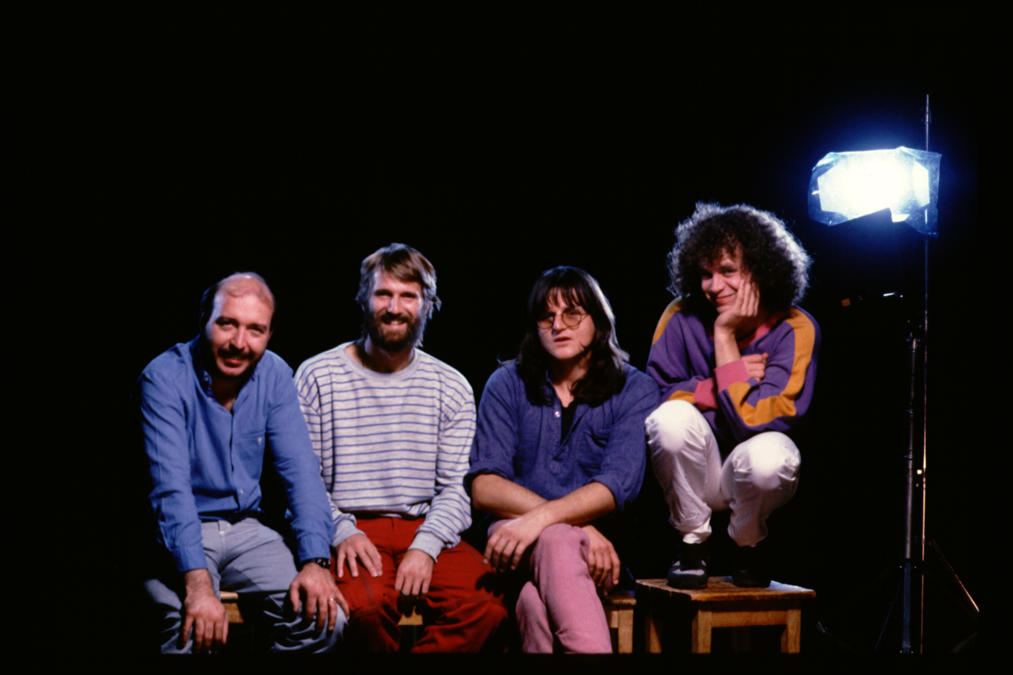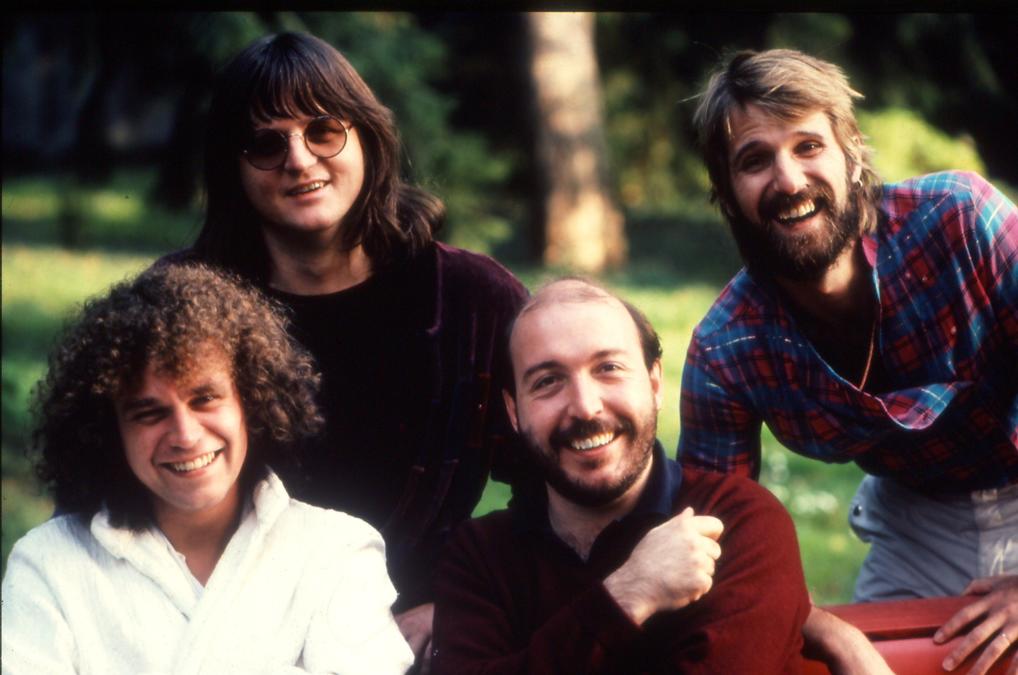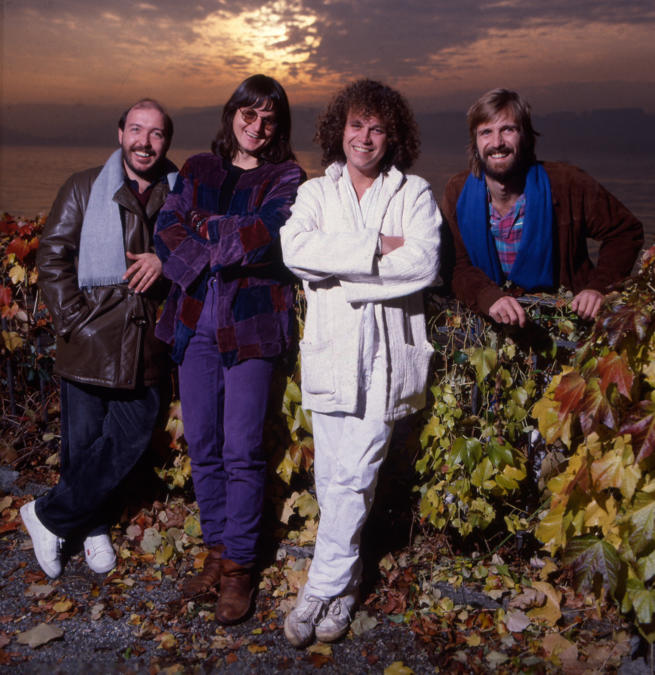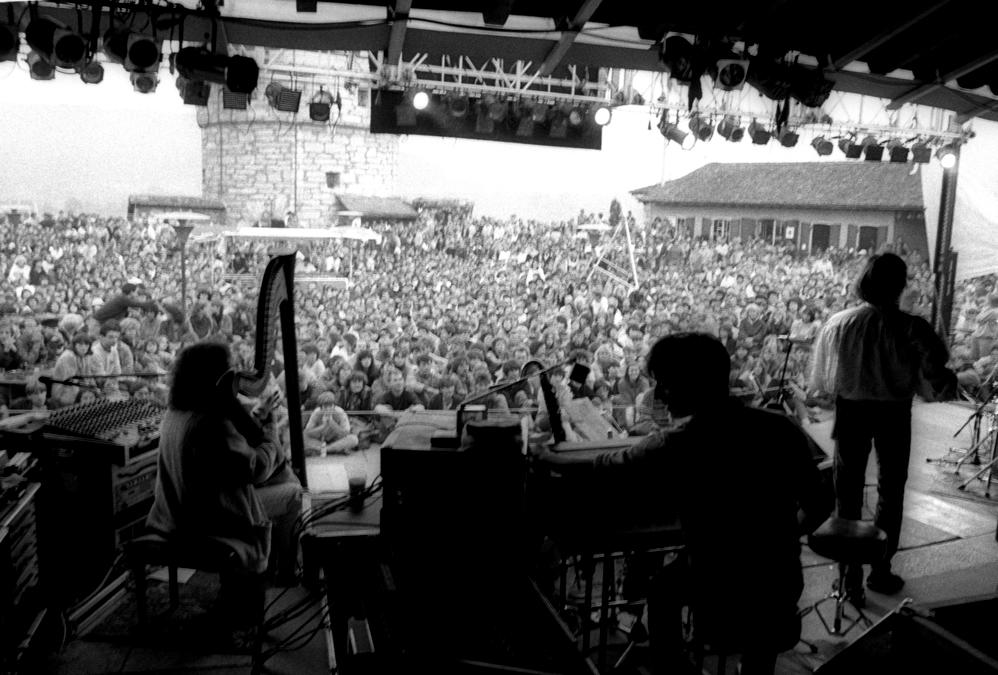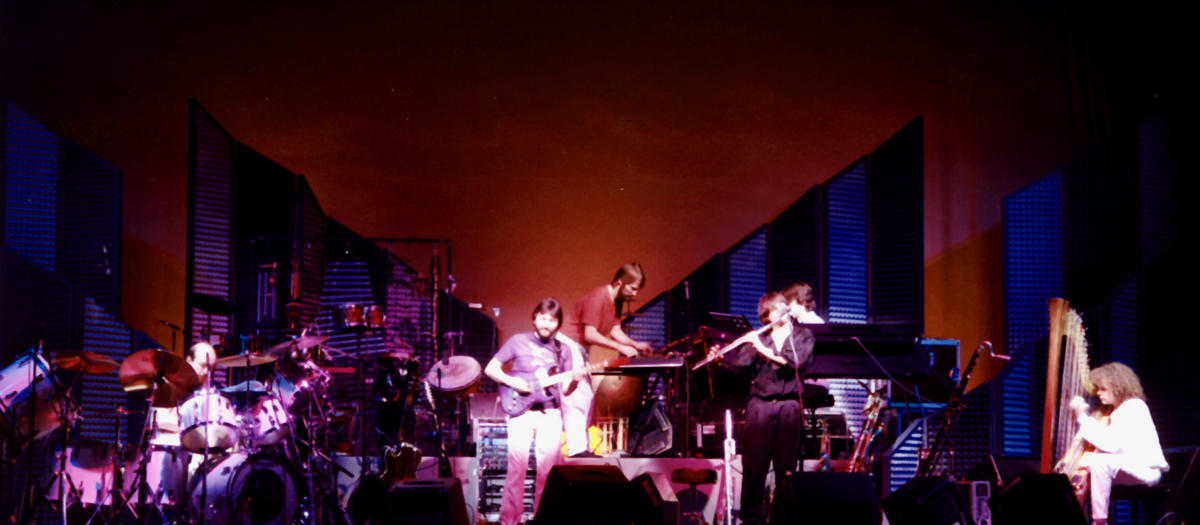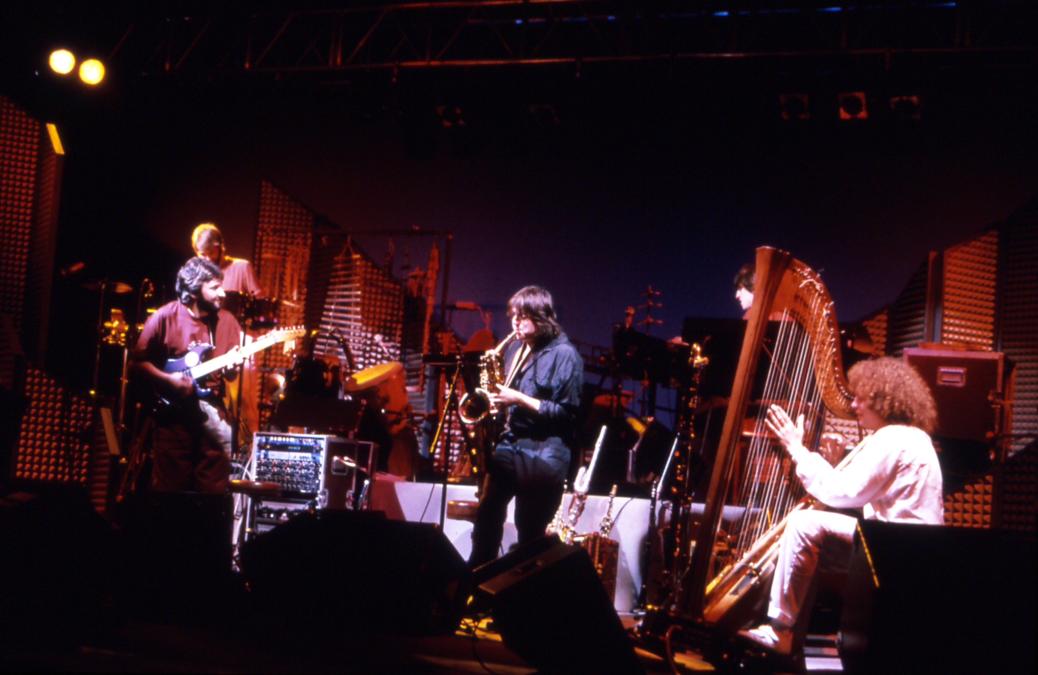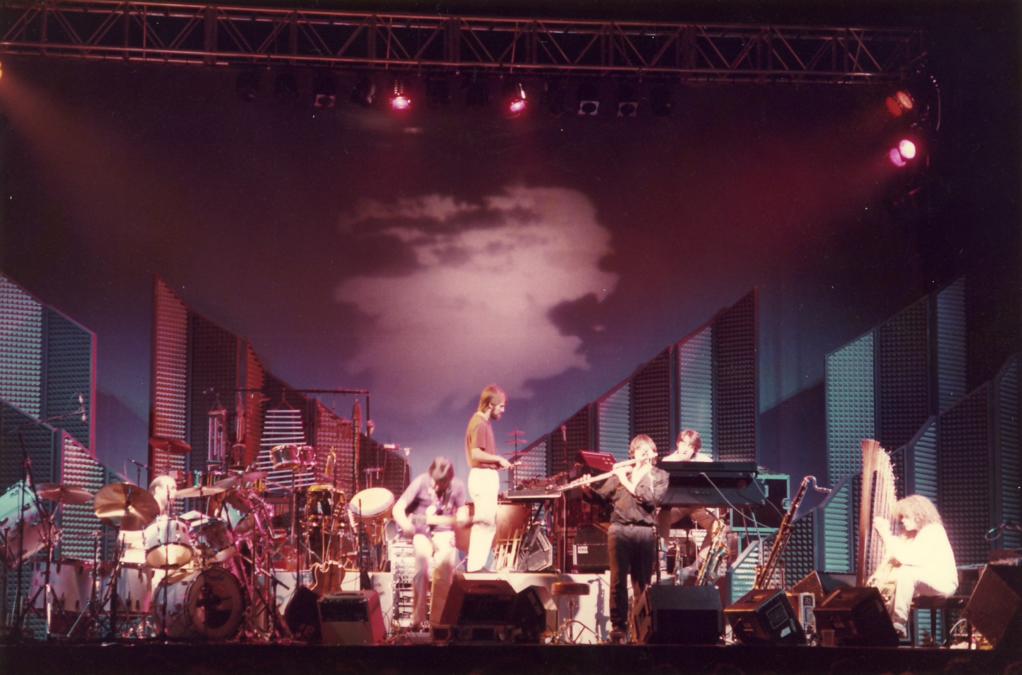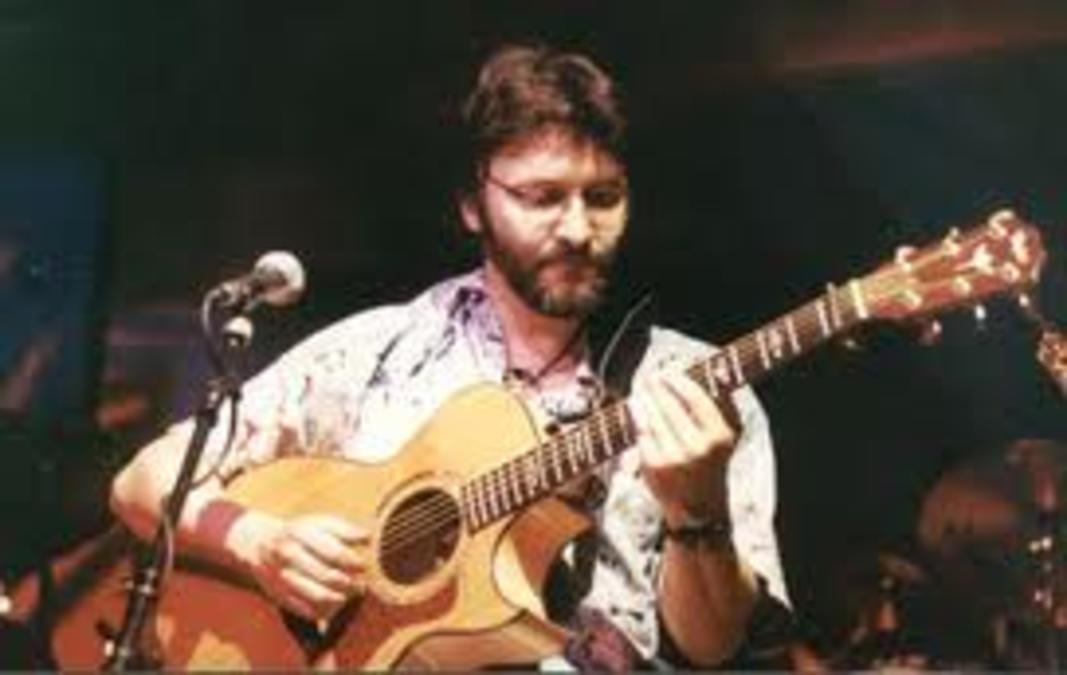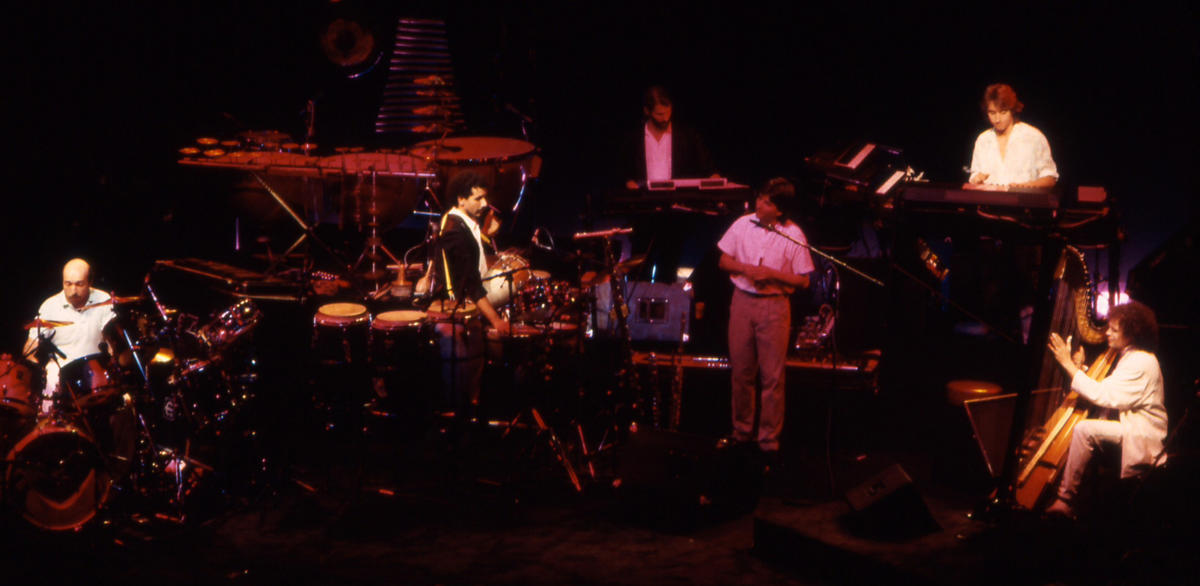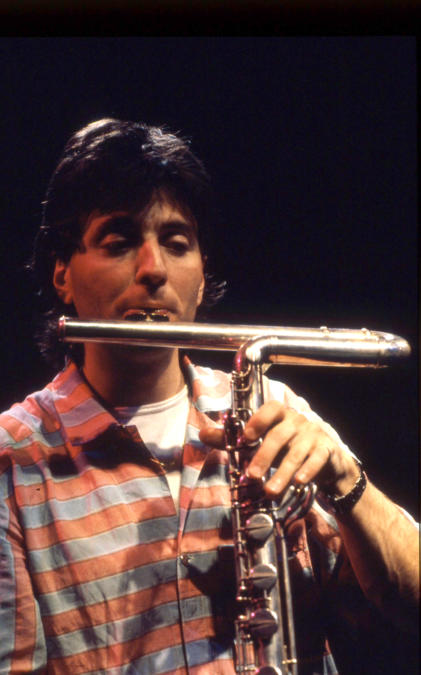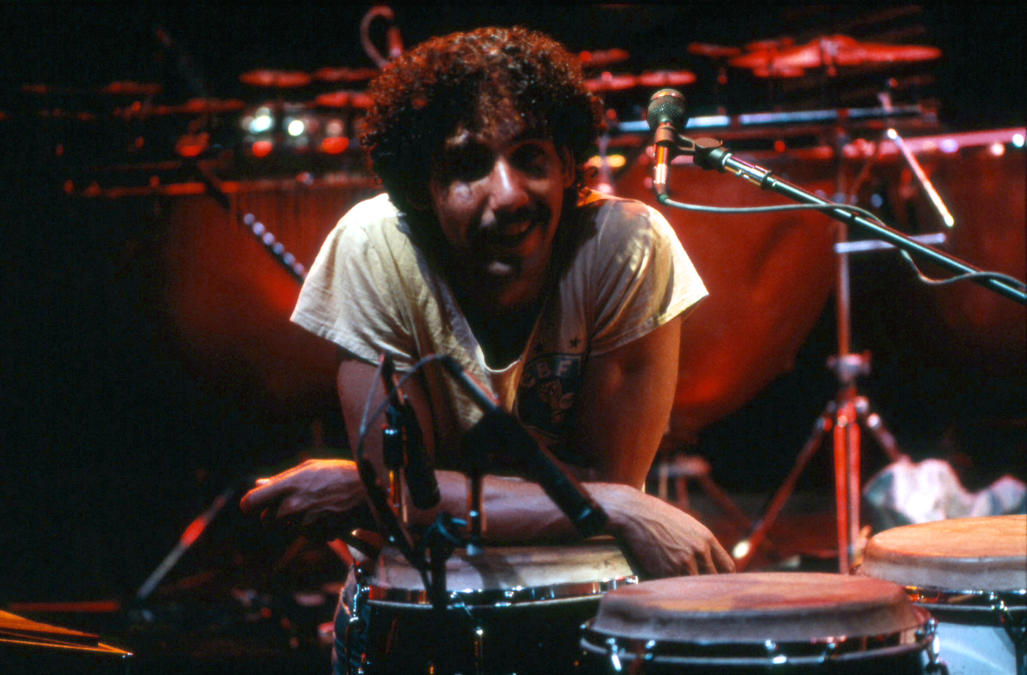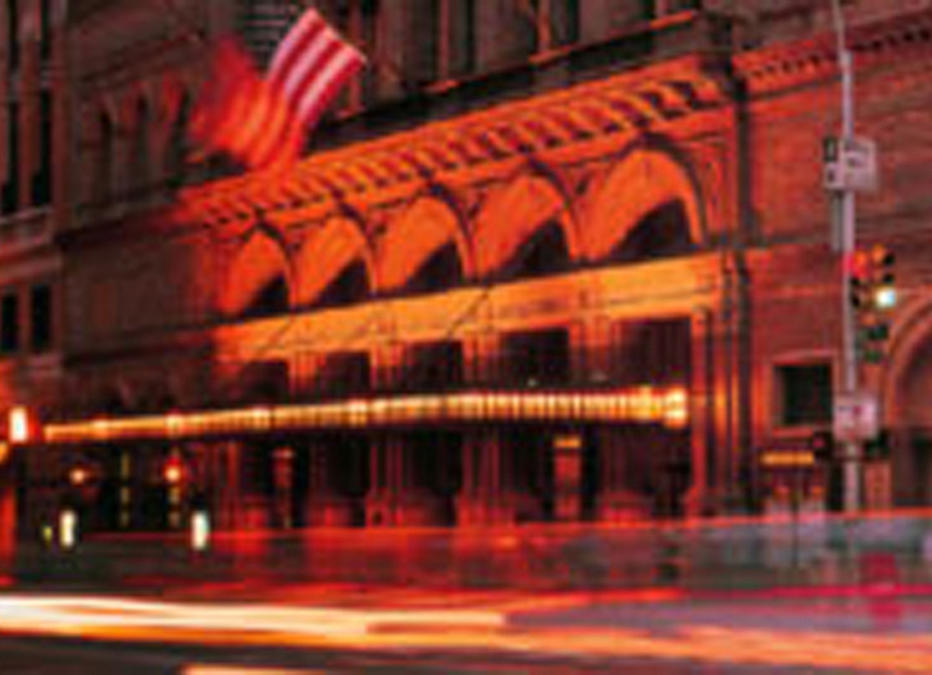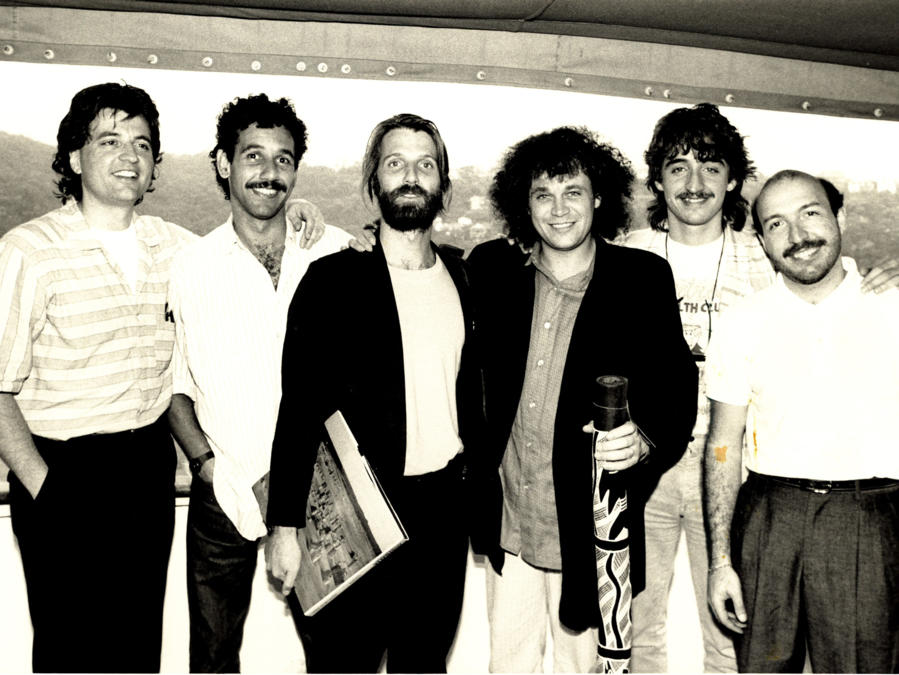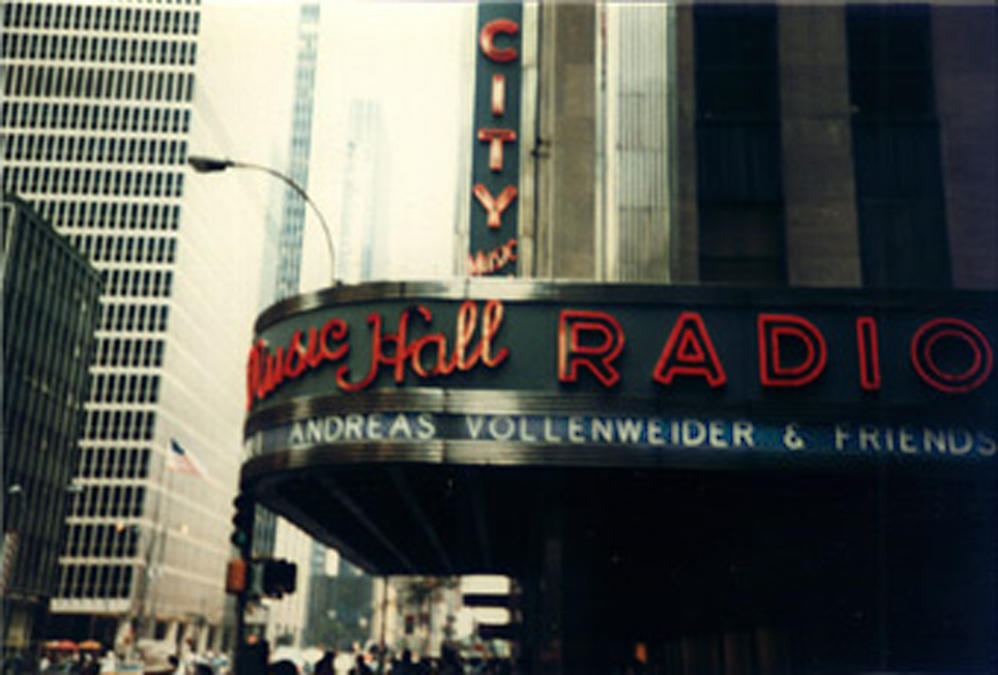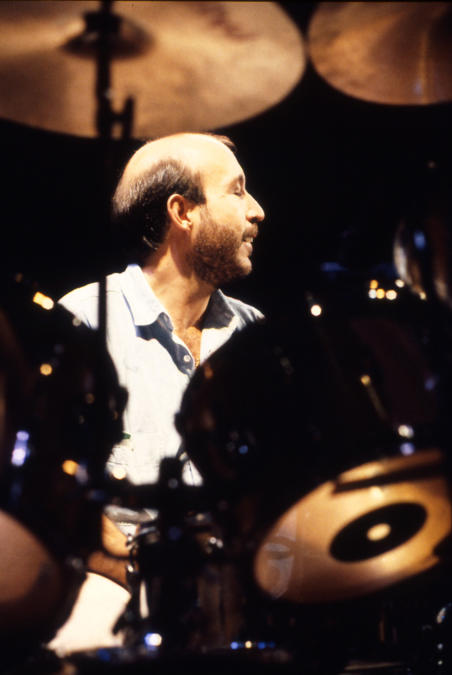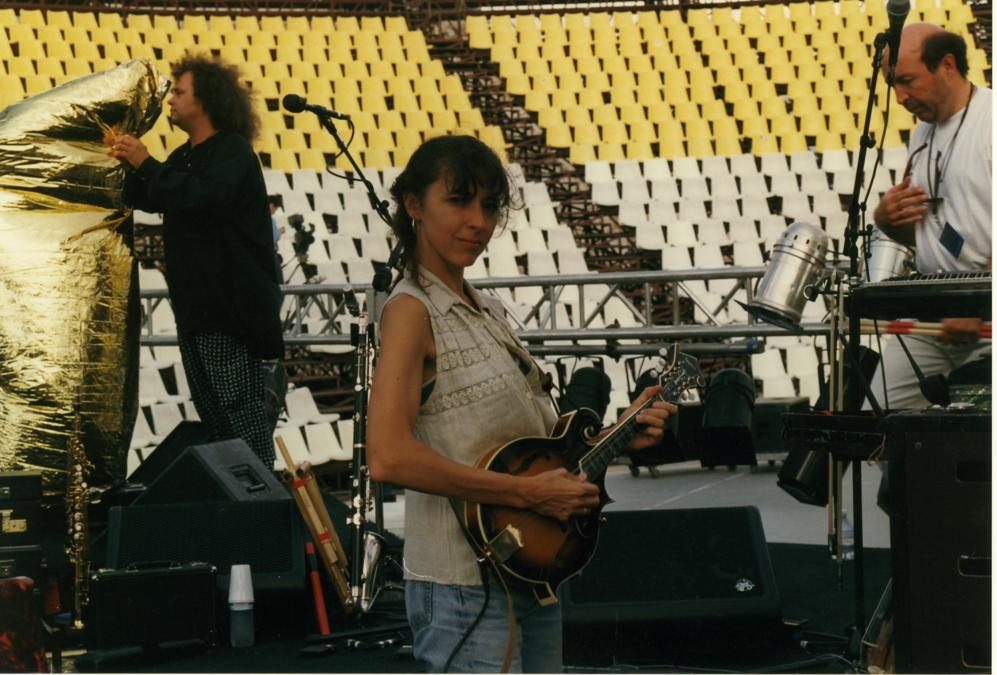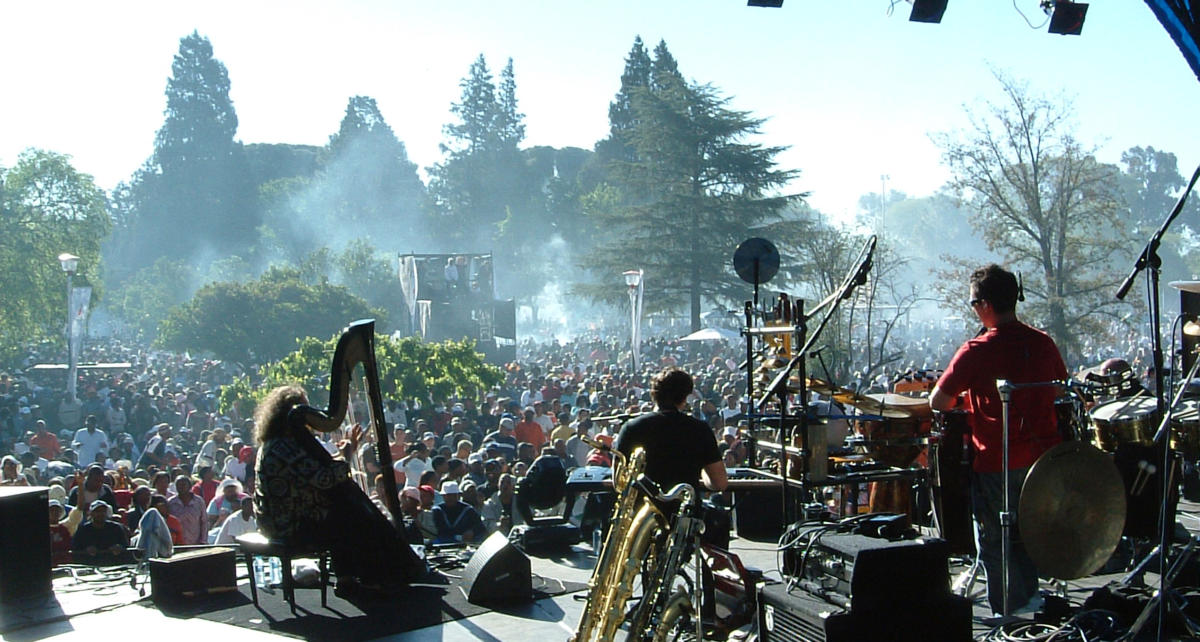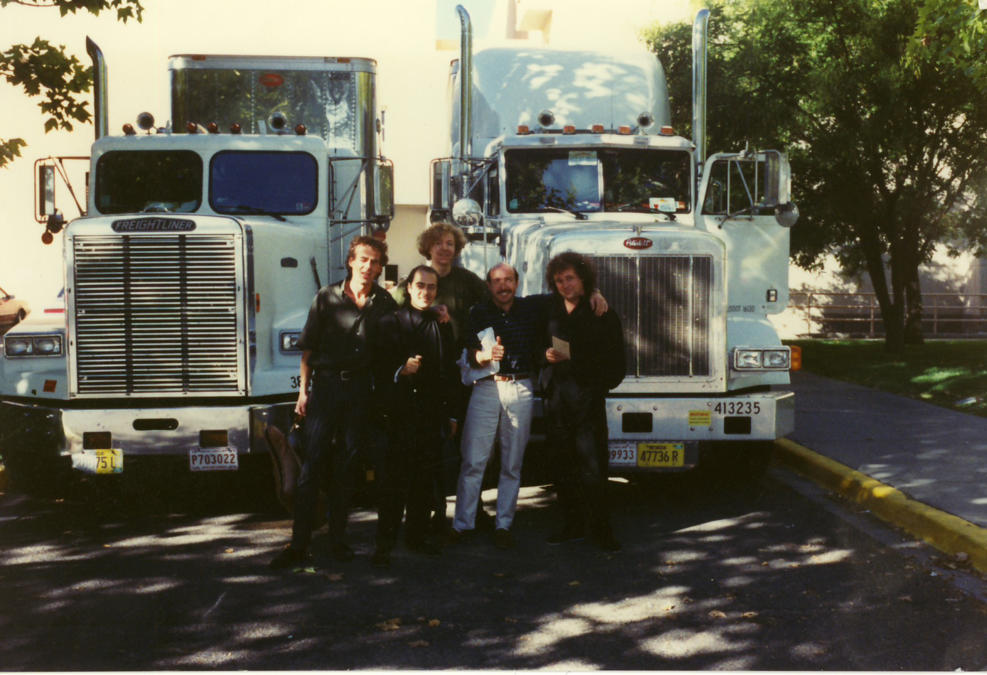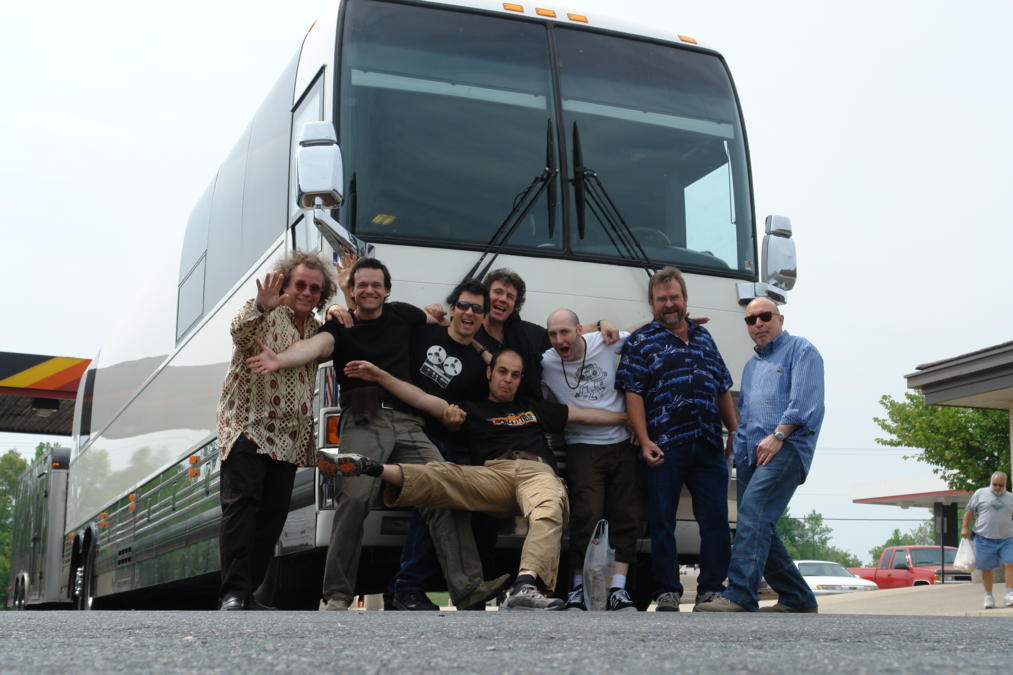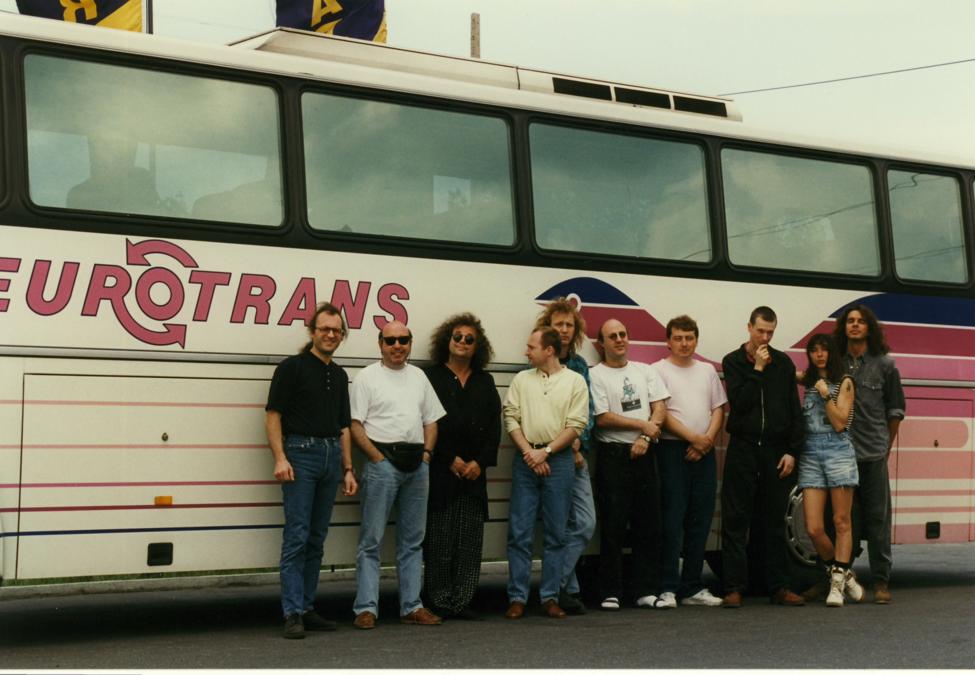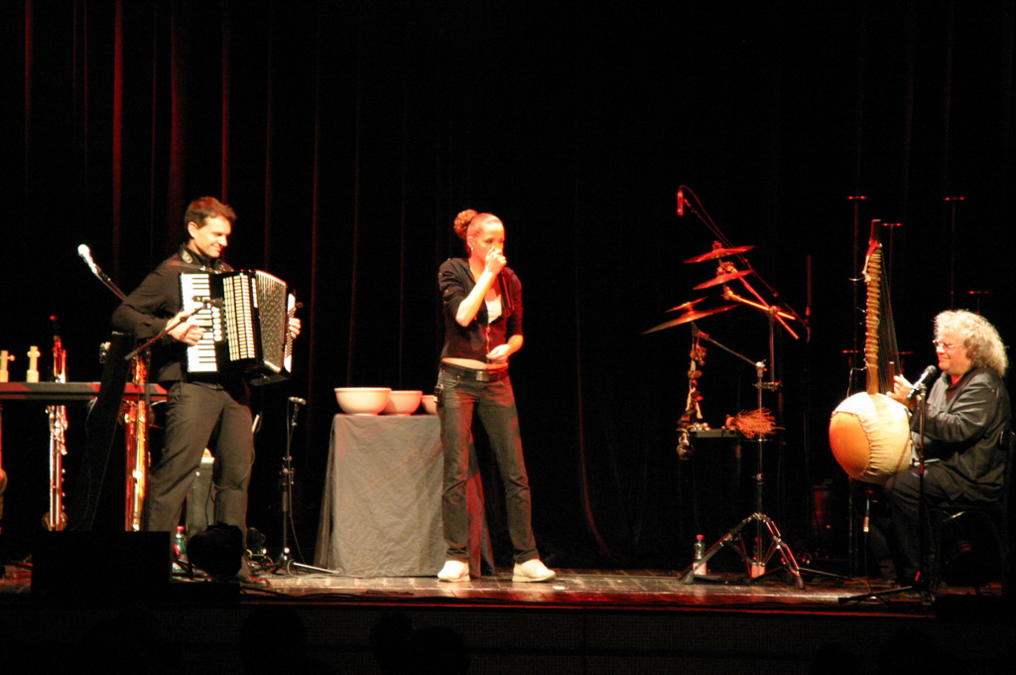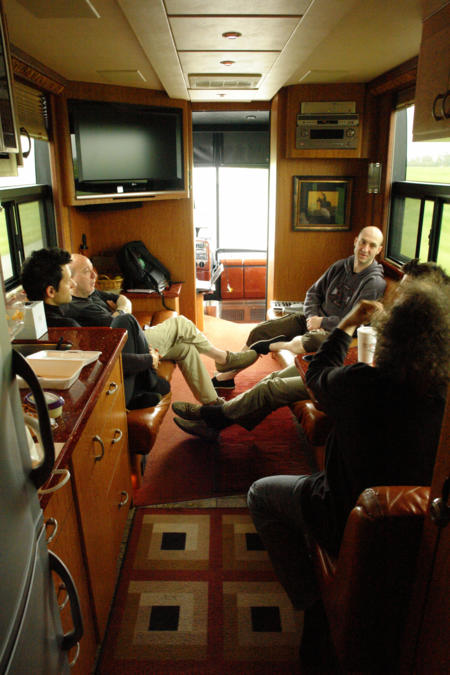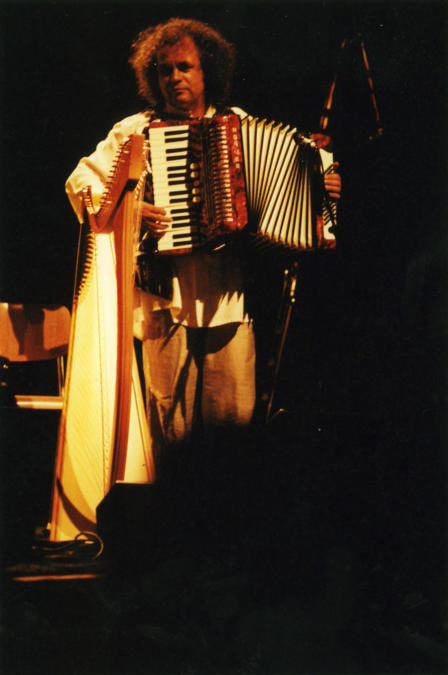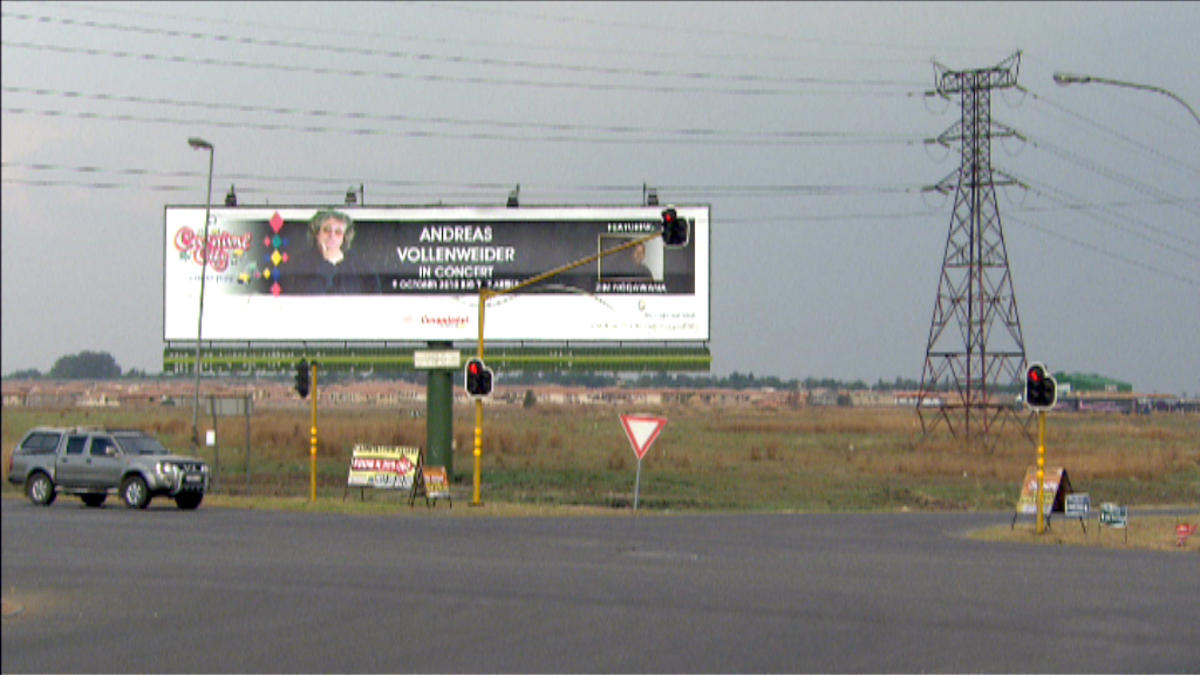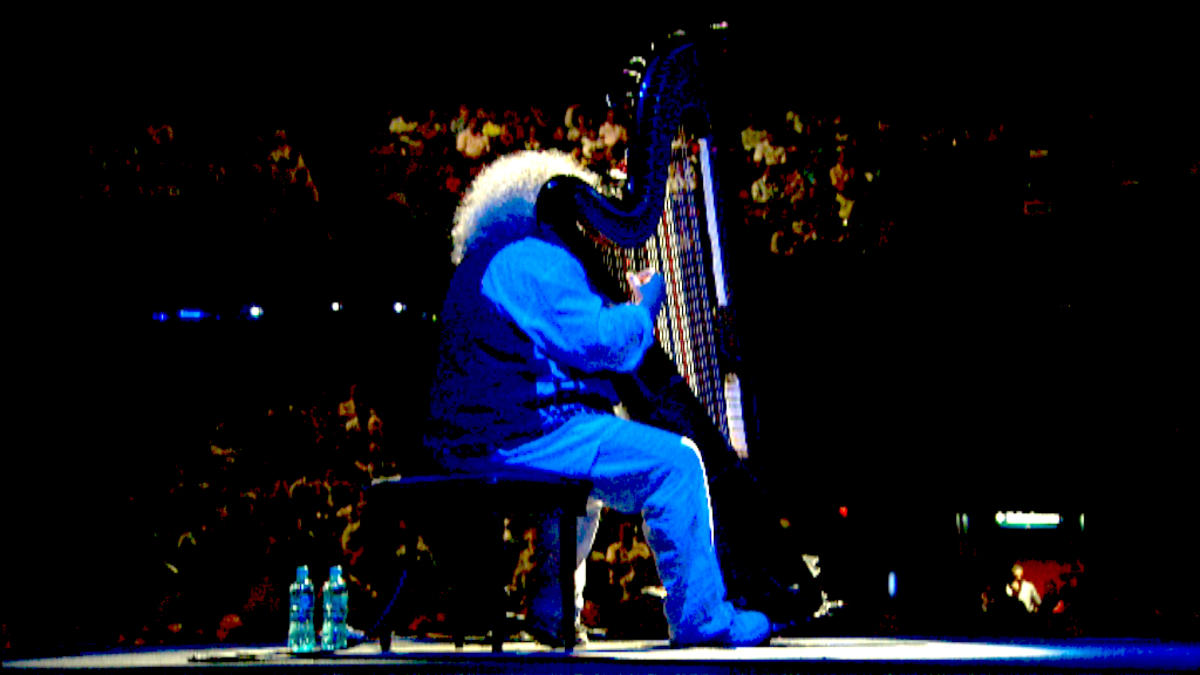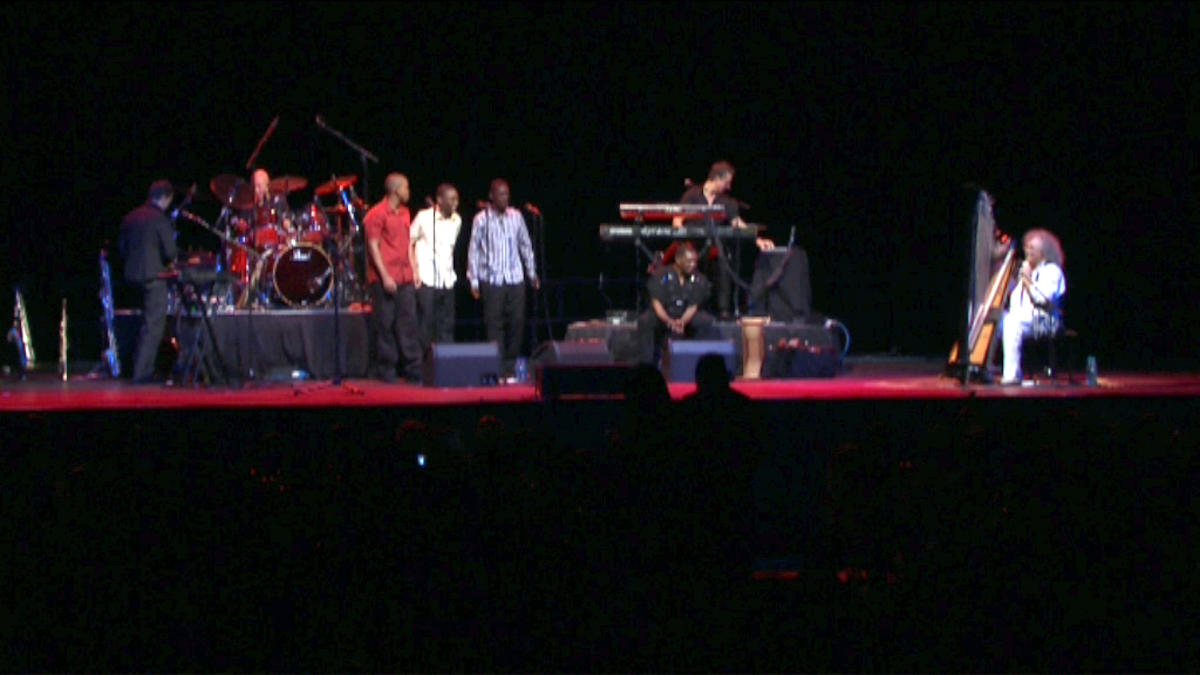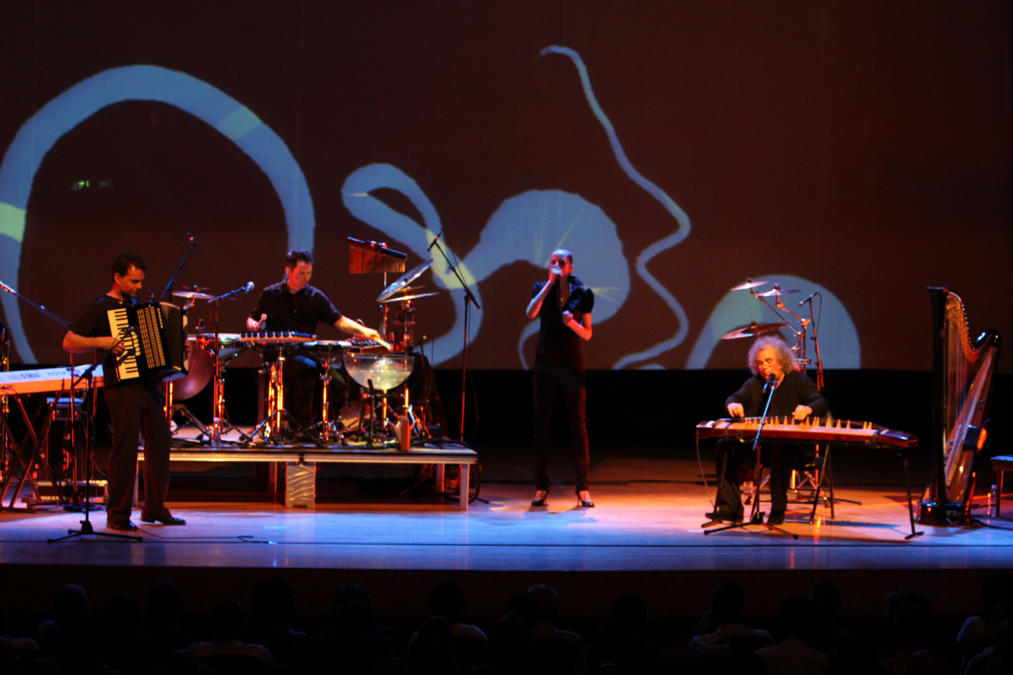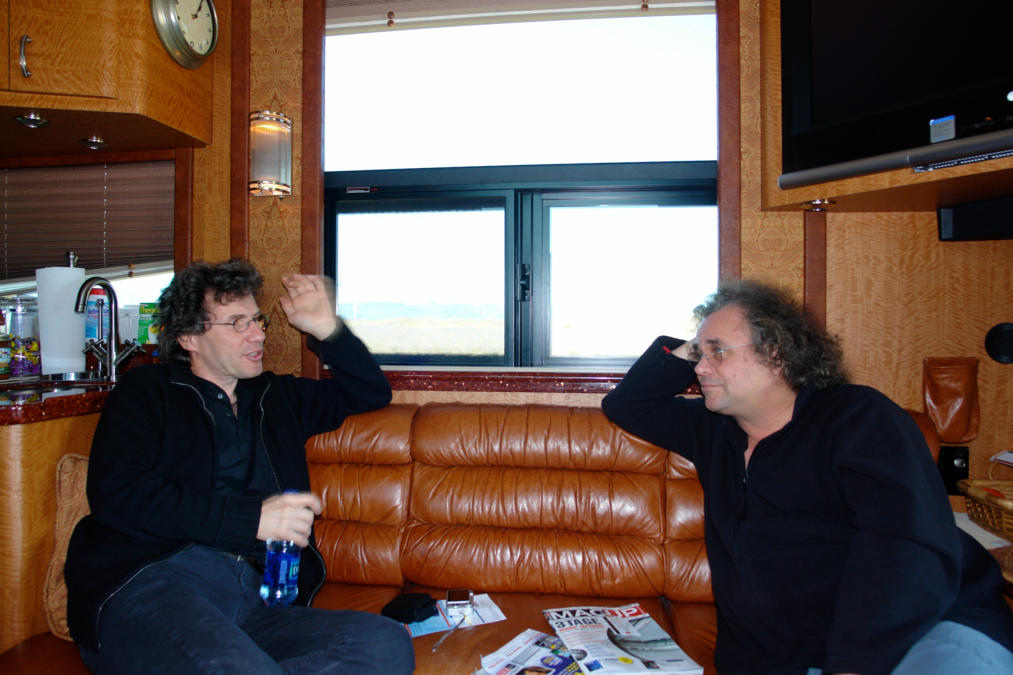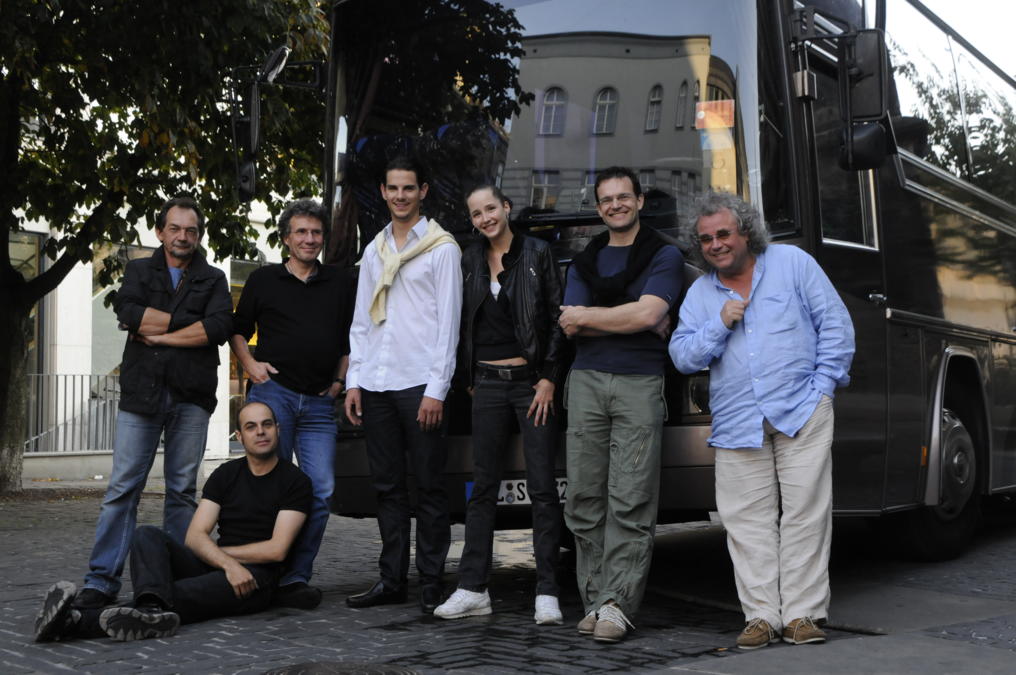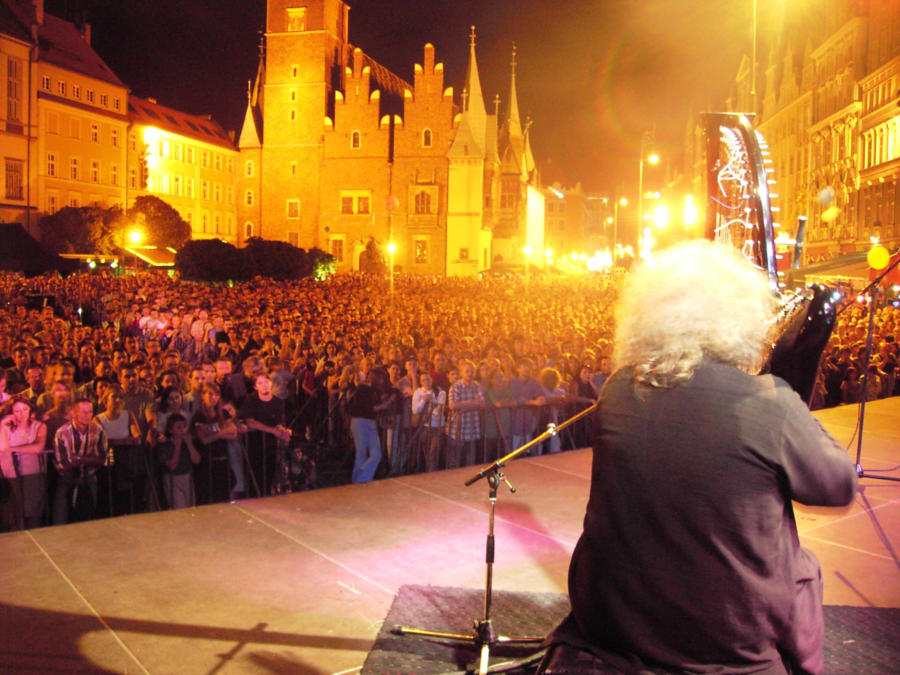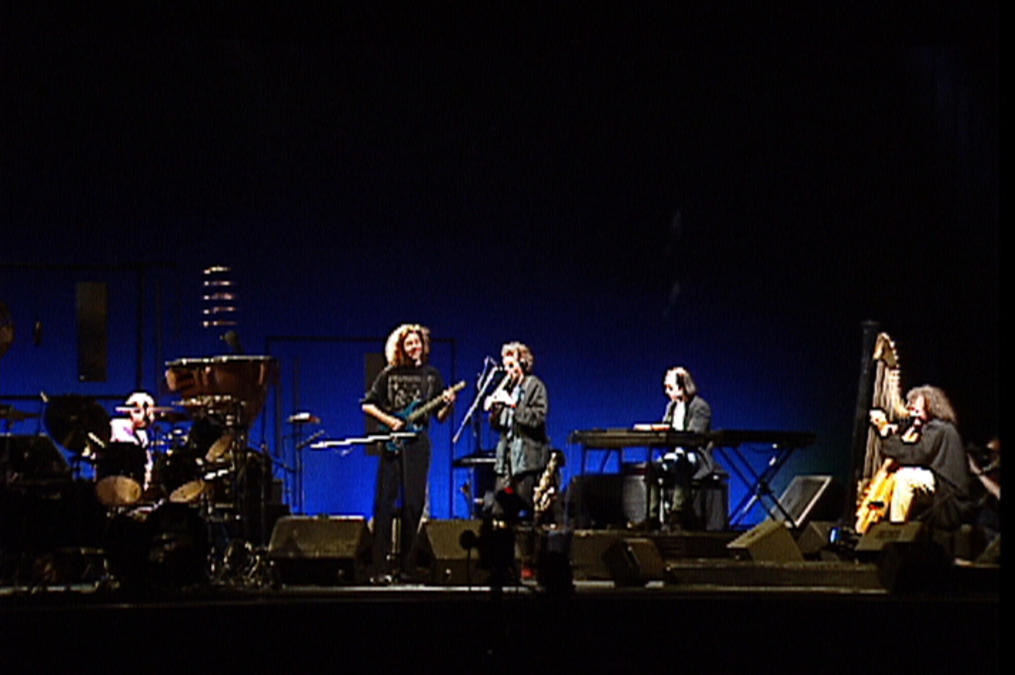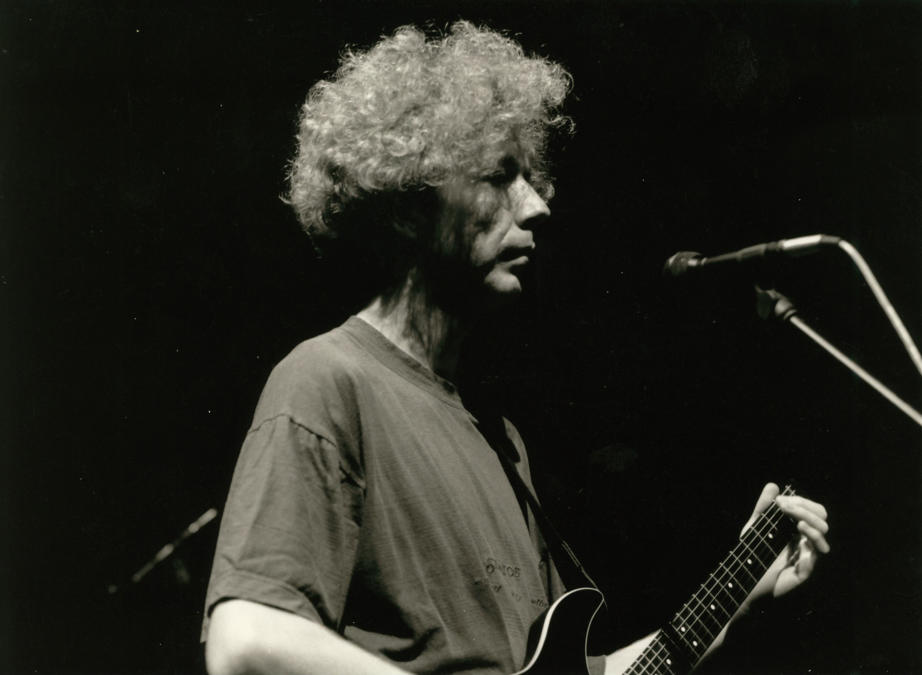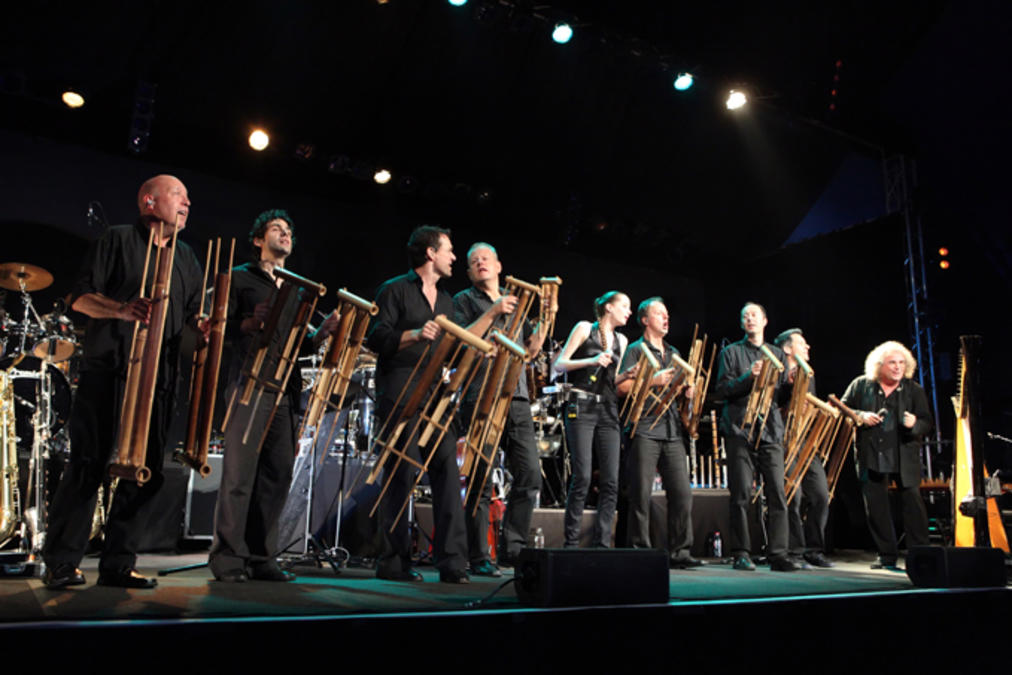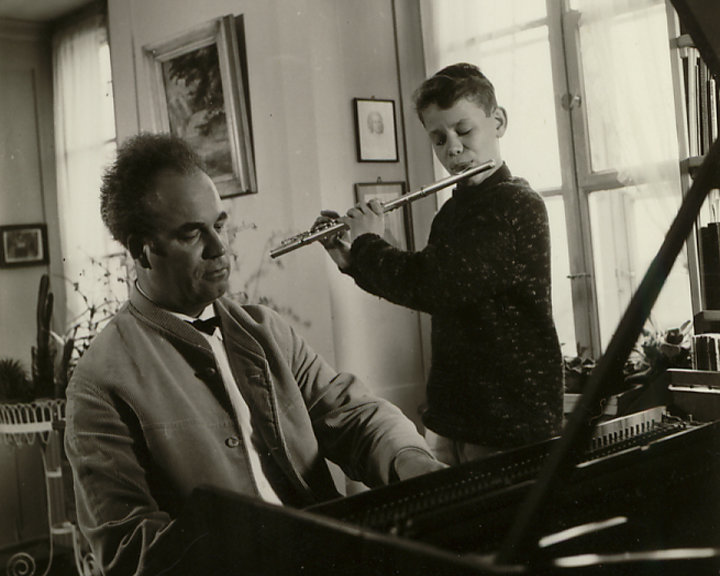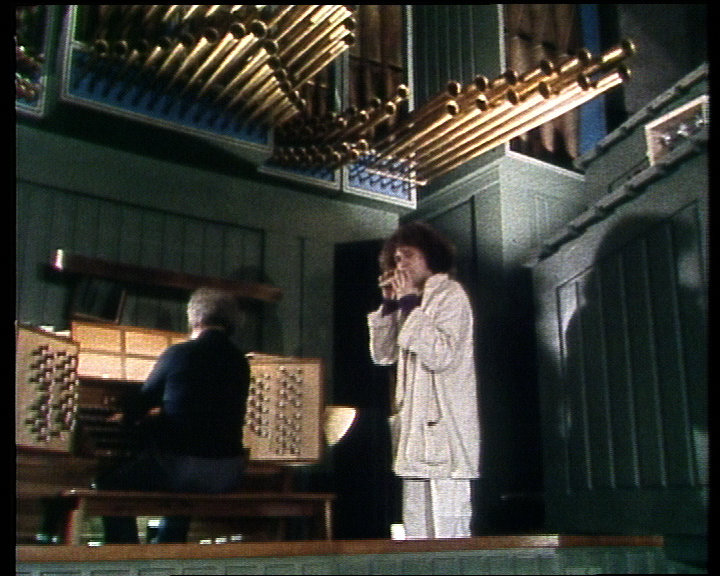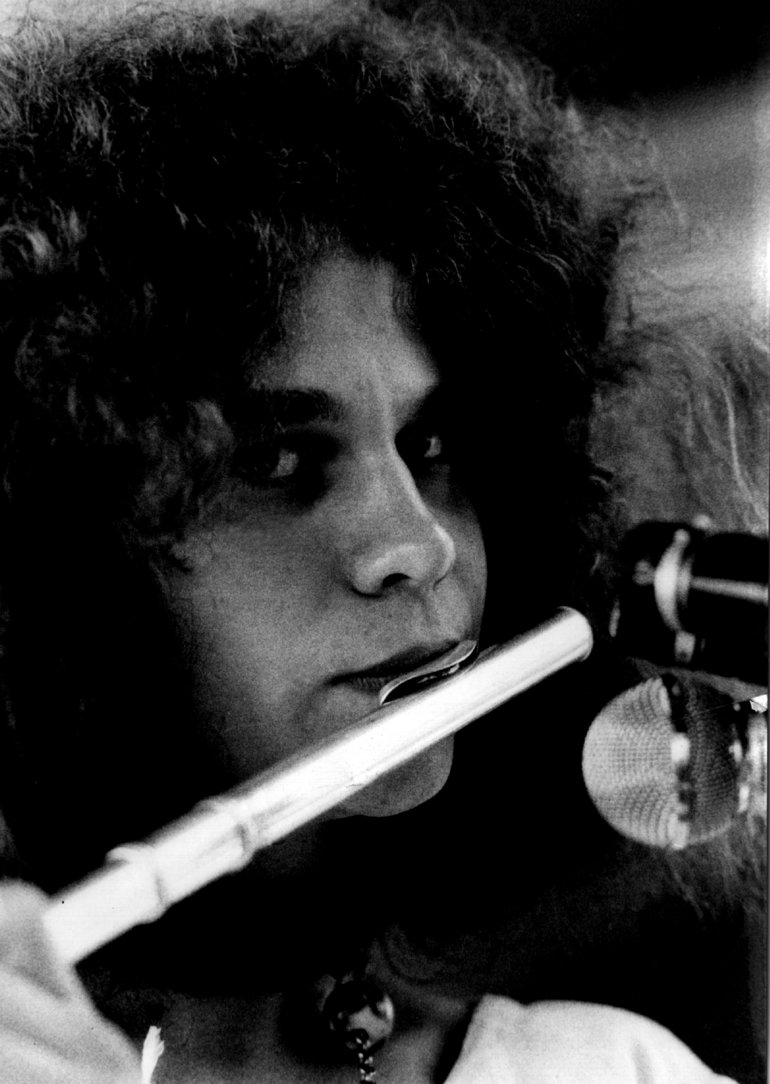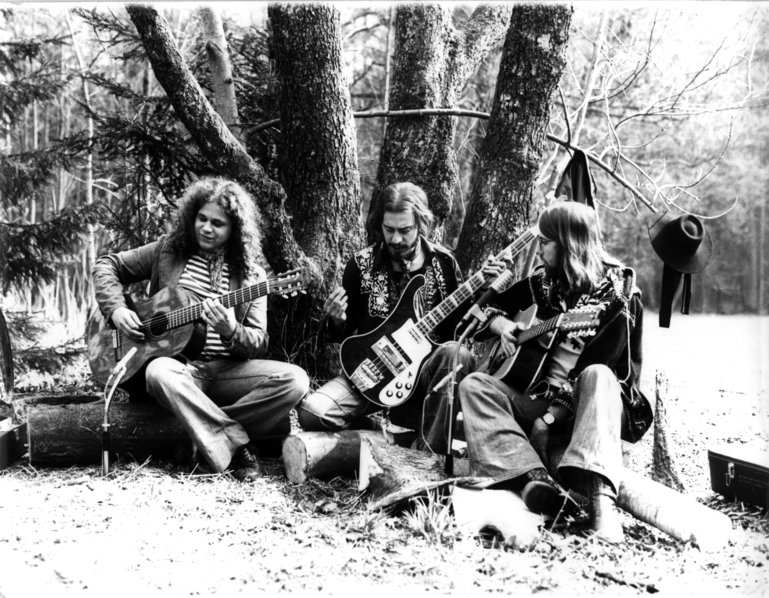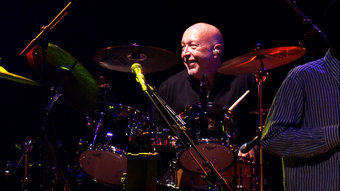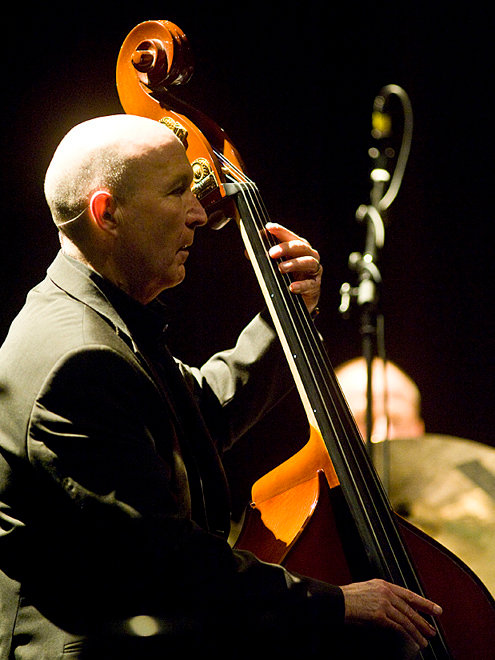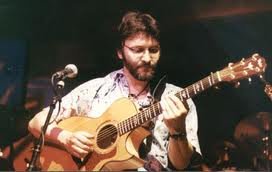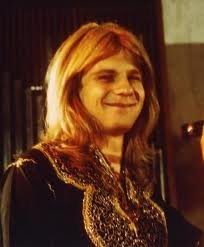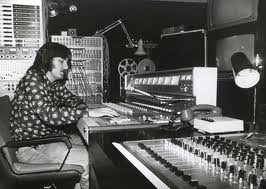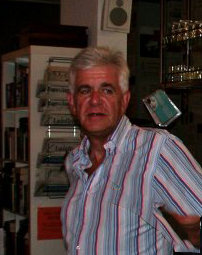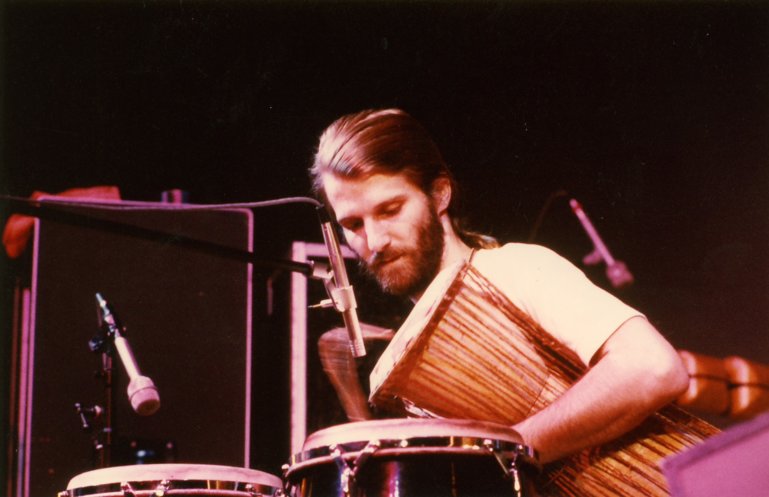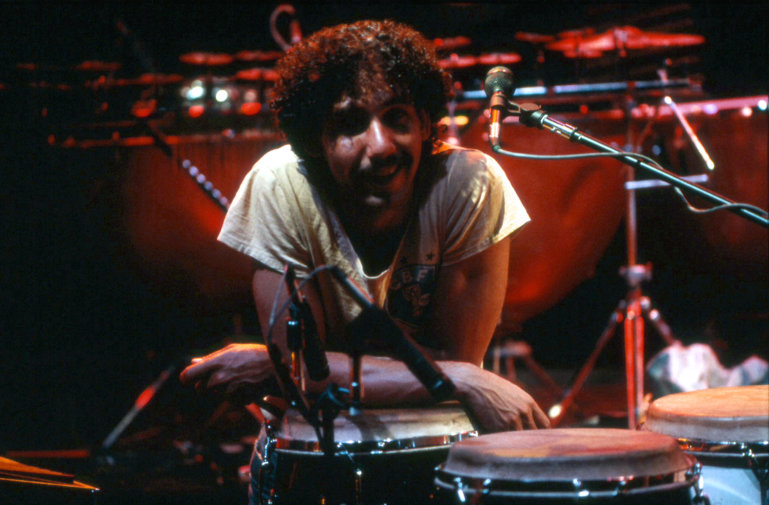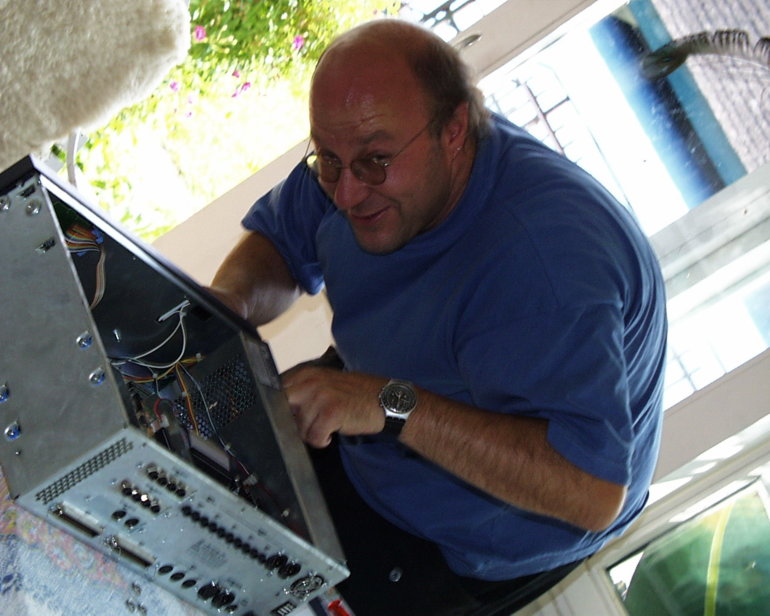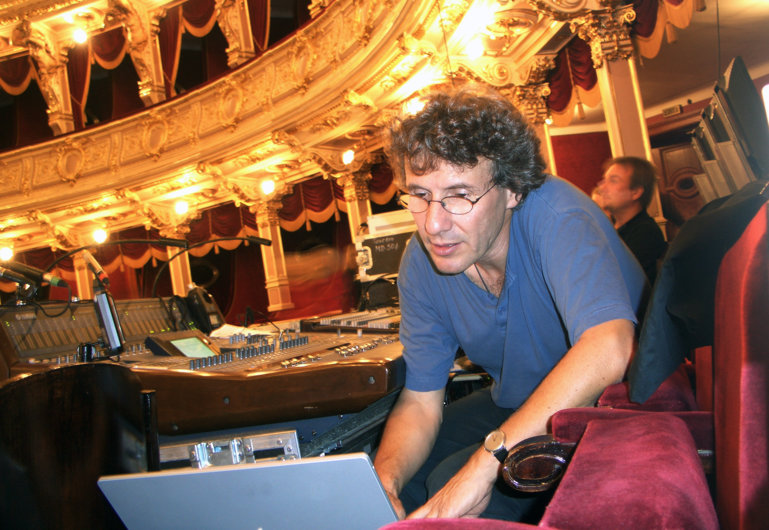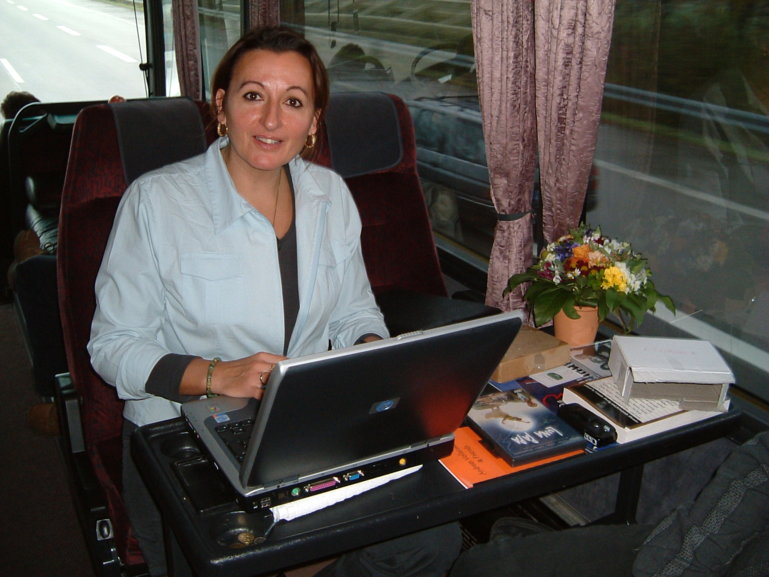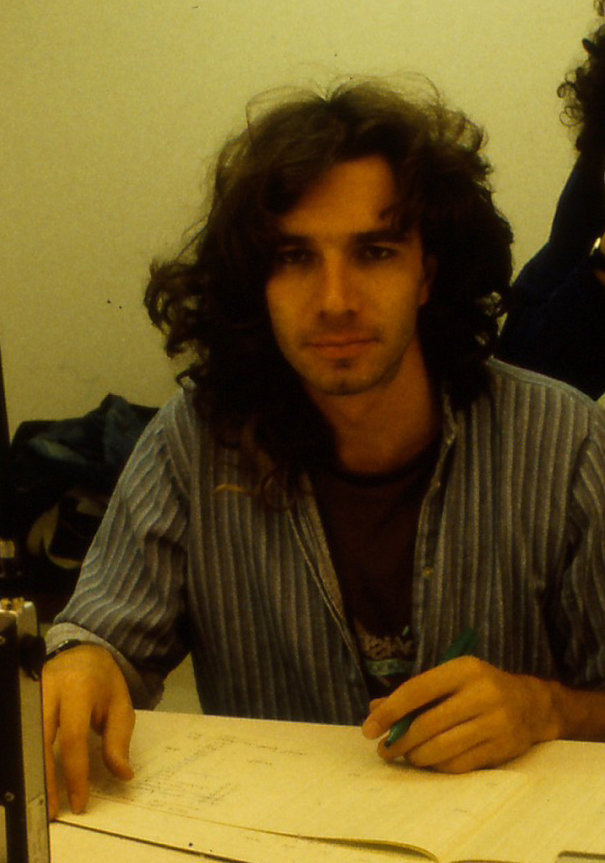Already very early in Andreas' life, music was very important as his personal survival strategy. It became the secret door to his own world, where he spent most of his time improvising at the piano and on other instruments, recovering from what was for him a real torture chamber: school.
The art of improvisation was the mission his father Hans Vollenweider passionately promoted - and playing music together became a way for father and son to communicate.
At a very young age Andreas went on adventurous musical journeys in various projects in jazz, rock, pop, freejazz and avant-garde classics as well as music for film and theatre. For a long time he remained a restless seeker, looking for his own artistic language. Even the choice of his instruments left him unsatisfied: despite his love for the piano or the wind and string instruments in his collection: there was always something missing. Even though this was not his intention, he became a true multi-instrumentalist over the years.
Already in the early seventies, some of his musical projects became very successful, especially the trio „poetry & music” with René Bardet (guitars and recitation) and Orlando Valentini (guitars, bass and percussion). The fact that the lyrics were not sung, but spoken on top of the music, made it an early form of rap, though for the most part rhythmically free.
Following the spirit of the time, the trio „poetry & music” was highly politically motivated and was very successful in the countries of German speaking Europe, performing their own music with lyrics of Heinrich Heine (1797), Francois Villon (1431), Pablo Neruda (1904) and Jacques Prévert (1904). The trio produced and released three albums.
Until 1976 the trio toured extensively, Andreas was playing a wide array of instruments, such as guitars, harpsichord, sax, flutes, fiddle or the Fender Rhodes stage piano. At the same time he began experimenting with various string instruments, following an inner voice, searching for a sound, an instrument with which he would be able to develop his own personal musical language. When his mother returned from a journey to England with the record „La Renaissance de la Harpe Celtique” of Breton and Celtic musician Alan Stivel, Andreas realized: the sound of the harp was very close to what had haunted him for such a long time.
It was only days later when he discovered a small celtic harp in a store in his hometown of Zurich. He borrowed the money from his mother, bought the instrument, went to his family's home, where he started playing and improvising right away. The familiarity was almost shocking to him, it was as if he had played this instrument already all his life. Instantly he started developing his own particular playing technique, which was a mixture between piano and guitar. The left hand mostly played the bass and the accompanying chords, very much like on a piano, while the right hand was plucking the strings similar to the technique of the classical guitar. It was the same evening that Andreas played his harp at a concert of his trio „poetry & music” in Riehen, a village near Basle in Switzerland. The song with the lyrics of Heinrich Heine was named „the little harpist”.
After this key moment he focussed on further developing the instrument as well as his own playing technique, which allowed him to play rhythmically, groovy, even funky in some moments. Only months later, he bought a classical pedal harp and found technical ways to amplify the instrument as well as to be able to acoustically sustain the sound in a context of a pop or rock band.
Shortly after he discovered the sound of his dreams, he invited a group of musician friends for recordings at the Sinus Studios in Bern, Switzerland: drummer Walter Keiser and his twin brother and bassist Peter Keiser, guitarist Max Laesser and pianist Philippe Kienholz.
Another very important and innovative friend and collaborator was sound engineer Eric Merz with whom Andreas already had produced and recorded hours of music for film and theatre before creating „Eine Art Suite”, which later became the first album with elements of the „Vollenweider-Sound”. Eric Merz recorded all of Andreas' later productions until 1993.
After recording only half of the songs of „Eine Art Suite”, the financial resources came to an end. When Andreas' long time friend, concert promoter and musical expert Hugo Faas initiated a collaboration with the “Tages-Anzeiger”, one of Switzerlands leading newspapers, which contributed the missing chunk of the budget, the album was completed in summer 1979. It became Andreas' first solo album and was released on the new label of the “Tages-Anzeiger”.
Andreas showed his talents as a multi-instrumentalist, while the harp did not play a prominent role then. The harp was also recorded in a more conventional way with microphones. Despite all these restrictions, the album can be seen as the „craddle of the Vollenweider-sound” and even though the reaction for this original instrumental music was very enthusiastic, Andreas knew that he still had to continue the search. But it was quite clear to him that this unusual and charismatic instrument seemed to be more than just another instrument in his collection.
It also was a time when Andreas experienced a lot of scepticism within the music business. „He is crazy again…”, was the tenor of the sarcastic comments. At the same time he was certain, that if these people could hear the sound which was still only in his head, they would change their minds. After the completion of „Eine Art Suite”, Andreas' invited drummer Walter Keiser and percussionists Pedro Haldemann and Jon Otis for new demo recordings to the Sinus Studios. These two songs, recorded during this session, would become the most effective door-opener; whoever was exposed to this music reacted wildly enthusiastic.
Shortly after Andreas was introduced to Hanspeter Ehrsam, a sound engineer as well as an electronic whizz. An intense collaboration between the two resulted in a revolutionary new pick-up system for the harp. It was this technological breakthrough that created the signature sound, which still is Andreas' musical identity until today.
After 1989 the team was joined by electronic technician Phillip Scheidegger. To this day both Ehrsam and Scheidegger are continuing to develop the harp and its otherworldly sound.
With the demo tape in his pocket, Hugo Faas set out to find a record company, qualified for this special music - this not with much success. „This will never sell…” was the standard comment of the A&R people representing the record co. labels. Many of them didn't even care to listen to the demo tape.
The first to hear as well as see the potential of this innovative music was German music producer Vera Brandes. She was very excited and encouraged Andreas to return to the studio to record more tracks with this configuration. In the meantime he continued the experiments and during early summer 1981 - with the help of family and friends - an entire album was ready and would be released on Vera Brandes' small independant label VERABRA records, this under the title „Behind the Gardens, Behind the Wall, Under the Tree…”
A few weeks later, Andreas followed the spontaneous invitation of Claude Nobs, the founder of the Montreux Jazz Festival, where he performed together with four drummers and percussionists and - one harp. The name of the band: „Andreas Vollenweider & Friends”. The public reacted frantically. For the first time this music was introduced to an international audience. An invitation of the Montreux-Detroit Jazz Festival in the US was the result. It was the beginning of a wonderful and turbulent time. Over night, the album „Behind the Gardens” sold in five-digit-numbers in Germany, the media and the press could no longer ignore the „Vollenweider project” and positioned themselves as „discoverers” of a unique new sound.
The official project name became „Andreas Vollenweider & Friends”, which was basically Andreas with Pedro Haldemann and Walter Keiser. Depending which of the follow-up albums needed to be performed on stage, the trio was extended by additional musicians:
1981-83 „Behind the Gardens”, Walter Keiser and Pedro Haldemann
1983-84 „Caverna Magica”, the German multi-instrumenatlist Jörg-Peter “Büdi” Siebert joined the group
1984-85 „White Winds”, Swiss pianist and keyboard-player Christoph Stiefel and guitarist Max Laesser, a companion of the early days.
1986-87 „Down to the Moon”, Max and Büdi left to focus on their own projects; percussionist Jon Otis and Swiss flutist Matthias Ziegler joined the ensemble.
After a time of excessive touring Andreas decided to allow everyone involved to take a serious break, mainly to avoid routine. After a few months the musicians would be able to renew their commitments.
1988-90 „Dancing with the Lion”, the band: Walter Keiser, drums and percussion, Thomas Fessler, guitars, Santino Famulari, keyboards and piano as well as Markus Kühne saxes and flutes.
1991-92 „Book of Roses”, Andreas produced his most extensive work of music with many guest musicians and large orchestra. It was a time when the concert activities stood completely still.
1993-94 „Eolian Minstrel”, time to find new ways of expression, Andreas writes songs with English Lyrics. Walter Keiser remains, still being responsible for the pulse of the music. Joining the new ensemble: the American singer Eliza Gilkyson, vocals, guitars, percussion and keyboards, the German Eberhard Hahn, saxes, flutes & many more wind instruments, the two Swiss musicians Marc Portmann, guitars and Chris Wiesendanger, piano and keyboards.
1995-96, various live bands with changing configurations
1997-2000 „Kryptos”, Walter Keiser, the American multi-instrumnetalist Mindy Jostyn and German Eberhard Hahn
2000-2001 „COSMOPOLY”, Walter Keiser, Joe McHugh, uillean pipes, whistle, bouzouky, Xiaojing Wang, erhu (Chinese violin), Ray Anderson, USA, trombone, Djivan Gasparyan from Armenia, duduk, Carlos Nunez from Spain, whistle, gaita. At the legendary New York concert they were joined by Mindy Jostyn and Carly Simon.
2001-2008 "VOX" Andreas and Walter are joined by the two Swiss musicians Andi Pupato, percussion and Daniel Kueffer, saxes, bass clarinet, keyboards, vocals, accordion.
2009 „AIR”, a very special formation under the name „Deep Breath Orchestra” brings the album AIR to the stage: Daniel Kueffer plays all the wind instruments. Instead of drums, the groove is „played” by a young woman from Berne/Switzerland, Stefanie Peter aka Steff la Cheffe, human beat box, percussion and vocals.
2010-11 „30 Years Anniversary Orchestra”, the band was joined by Oliver Keller, guitars, Daniel Pezzotti, cello, Sandro Friedrich, exotic flutes, Greg Galli, keyboards/vocals and Yembelela, the vocal group from South Africa,
Already in 1982, the AVAF-Office was operating internationally out of Zurich. The management: Hugo Faas, who was responsible for record companies and publishing, joined by Hanswalter Huggler for the production of the international tours and financial affairs. In 1984 Sylvie Rossi joined the team and took care of all the complex administrative and organisational matters of the project, which had grown tremendously in logistics and personnel. It was Sylvie who held together the world of AVAF during all these years. We were all deeply saddened when Sylvie died in August 2013. She is unforgetable - and she will always be a part of our music and of our lives.
Hanswalter Huggler created his own project: the unique Festival „Live@Sunset” in Zurich and is commited to AVAF as business executive.
In 1992, after more than 10 years, Hugo Faas retired from the operative management, this in order to focus on his passion; the promotion of authentic world music concerts. To this day he still is close to AVAF and assists as a consultant.
2010 legendary "Zumi", Peter Zumsteg, highly respected leading figure of the European music business since the late sixties, has joined AVAF as management consultant. His contribution to the project includes decades of experience as an enabler and catalyst as well as his enormous network. Among others he has introduced Andreas to the british producer Andy Wright (Simply Red, Eurythmics, Jeff Beck...). The fruits of their collaboration will be part of a series of future releases.
2009 „AIR”, a very special formation under the name „Deep Breath Orchestra” brings the album AIR to the stage: Daniel Kueffer plays all the wind instruments. Instead of drums, the groove is „played” by a young woman from Berne/Switzerland, Stefanie Peter aka Steff la Cheffe, human beat box, percussion and vocals.
2010-11 „30 Years Anniversary Orchestra”, the band was joined by Oliver Keller, guitars, Daniel Pezzotti, cello, Sandro Friedrich, exotic flutes, Greg Galli, keyboards/vocals and Yembelela, the vocal group from South Africa.
2011, 30 Year Anniversary Concert at the Montreux Jazz Festival, an unforgettable event. It is the last public appearance…
2011-2020, Andreas retires and works intensely, but "in silence" on his first novel and new music.
2020: After a long break, the new album "Quiet Places" and the first German novel by Andreas Vollenweider "Im Spiegel der Venus" are released
Two years later, in October 2022, the next album "SlowFlow & Dancer" is already available on the market. Andreas Vollenweider began working on this project with British producer Andy Wright (Eurhythmics, Simply Red, Jeff Beck, Simple Minds, Sinead O'Connor, among others) already at the end of 2010.
In 2023, Andreas Vollenweider & Friends return to a small concert tour after many years. Together with Isabel Gehweiler (cello), Walter Keiser (drums/percussion), Daniel Kueffer (sax/clarinets/flutes/keyboards), and Sorin Spasinovici (viola/accordeon/keyboards) he performs at the Festival da Jazz St. Moritz, in Johannesburg (South Africa) at the Joy of Jazz Festival and twice at the sold-out KKL in Lucerne (Switzerland) to celebrate his 70th birthday.

